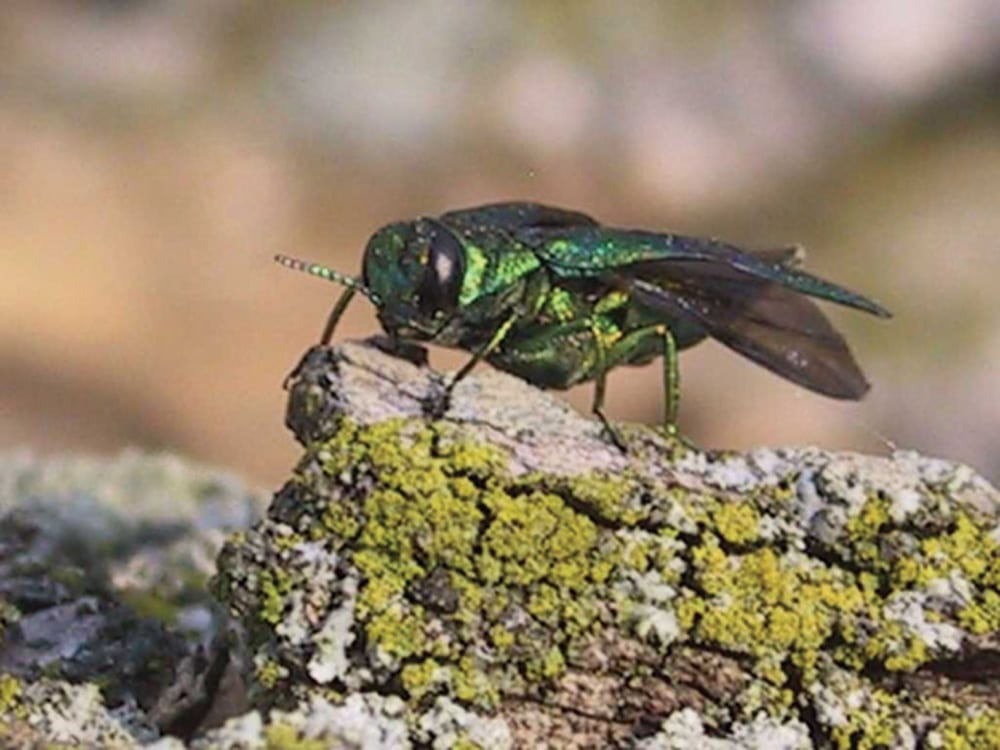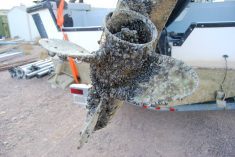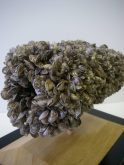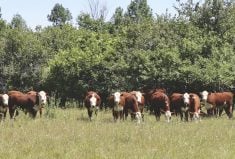Another highly destructive invasive pest has breached the boundary of the eastern Prairies and Albertans are being asked to keep watch — and not unwittingly aid its spread.
The emerald ash borer, which attacks and kills all species of ash, was found in Winnipeg this winter. The beetle is on a steady invasive march across North America, destroying millions of trees in its wake.
“It does quite well in our climate and unfortunately, our trees have very little resistance to the insect,” said Andrea Saunders, regional program officer in plant protection with the Canadian Food Inspection Agency.
And although the pest hasn’t been found yet in Alberta, there are a lot of ash trees in the province and officials fear it would quickly spread. It is not only a common boulevard tree in urban areas but shelterbelts are also predominantly ash, and the species is abundant in natural wooded areas.
“It’s not just an urban problem — it’s also out in the countryside. If it does come to Alberta, there’s enough host material that there’s cause for concern,” said Saunders.
“We want to keep it out of Alberta for as long as possible.”
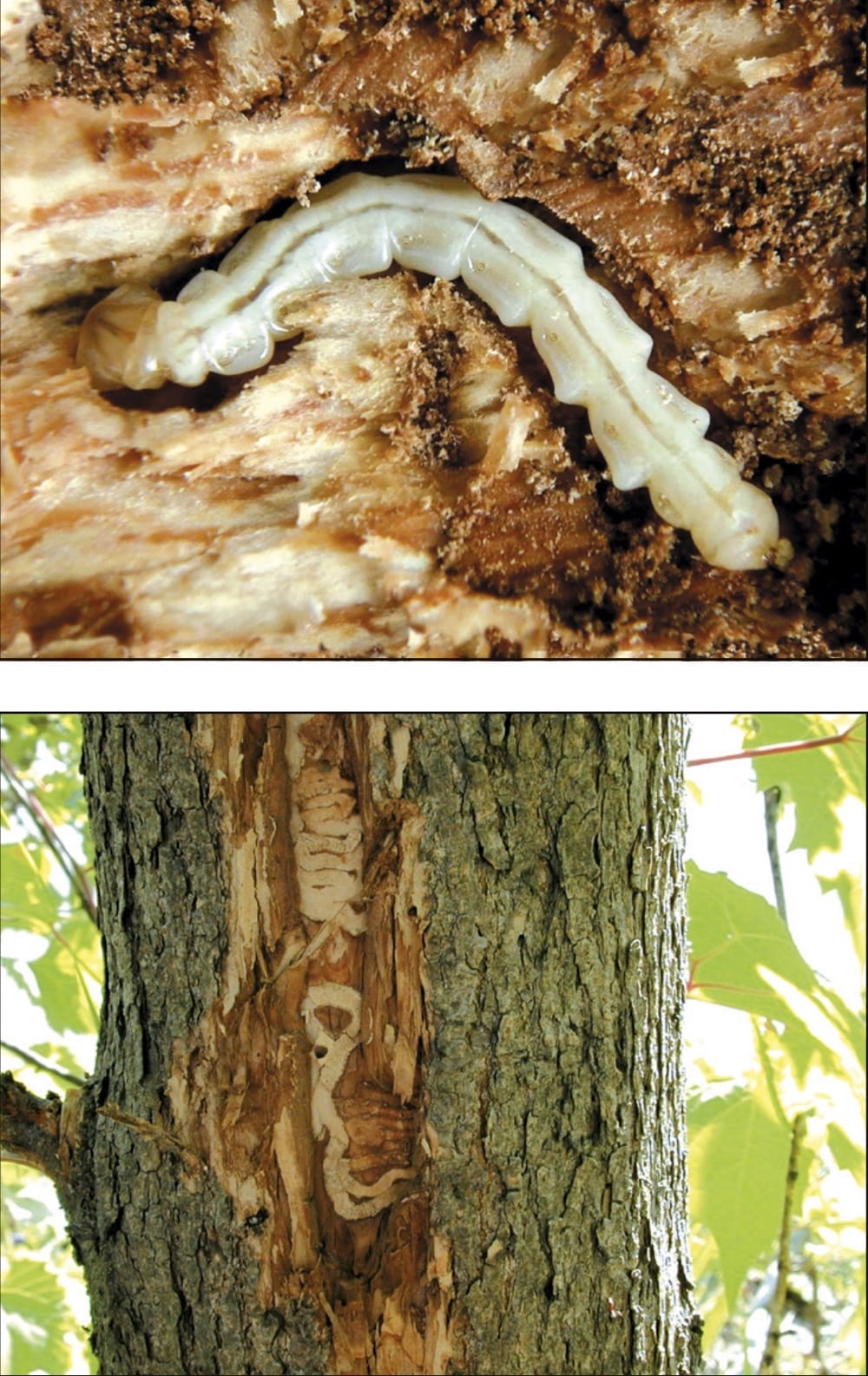
It’s the larvae of the metallic green beetle, a native of China and eastern Asia, that does the damage — and makes infestations hard to spot. Females lay as many as 200 eggs either singly or clustered in bark crevices. The eggs are quite tiny, only about one millimetre in diameter but the larvae quickly get bigger during their four moulting (growth) stages.
“During the larval stage, most of the damage is done. That’s under the bark, inside the tree,” said Saunders.
Then the creatures pupate, and the adult beetles emerge (starting in late May or early June) by chewing their way out of the tree, creating characteristic D-shaped exit holes.
“Those exit holes are really characteristic if it is found on ash,” said Saunders.
Read Also

Farming Smarter receives financial boost from Alberta government for potato research
Farming Smarter near Lethbridge got a boost to its research equipment, thanks to the Alberta government’s increase in funding for research associations.
Removing the bark over an infected area will also reveal S-shaped larval ‘galleries.’
Those signs are key — otherwise property owners could inadvertently help the beetles spread.
Infected trees typically first exhibit a loss of green colour in the uppermost leaves (chlorosis), followed by thinning and dieback of the crown. Leaves may also turn yellow at the end of summer. Eventually, as more of the crown dies back, the tree branches can break off or trees can even topple over. Infected trees usually die within three years, but can be killed in as little as one.
“Because it’s hard to detect this pest at low levels, people might unwillingly cut down the ash tree in their yard,” said Saunders. “They don’t know they have emerald ash borer in that tree. They cut it down and they take it as firewood to the lake. It’s that unintentional, unknowingly transporting a product that has a pest in it.”
And humans have undoubtedly been the culprits in the beetles’ spread.

They were first found in southern Ontario in 2002 but have somehow travelled more than 1,500 kilometres to Manitoba since then — even though beetles can only fly about 10 kilometres in a year. (It’s the second time in recent years that a major invasive species has reached the province. In October 2013, zebra mussels were found in Lake Winnipeg and are now endemic in that body of water.)
The Canadian Food Inspection Agency has a simple message for preventing the spread of emerald ash borers.
“We have a firewood campaign that says, ‘Don’t move firewood, buy it local, buy it on site, and never take it back home again,’” said Saunders. “The idea is that people shouldn’t be travelling hundreds of miles with firewood in general. Firewood can transport other pests, not just emerald ash borer.”
The CFIA is conducting surveillance in Alberta and has 85 traps out in various municipalities across the province. If you spot signs of the beetles, contact your municipality or the agency.
The Canadian Forest Service has an identification guide for emerald ash borer (Google ‘Visual Guide Emerald Ash Borer’).
— With staff files


